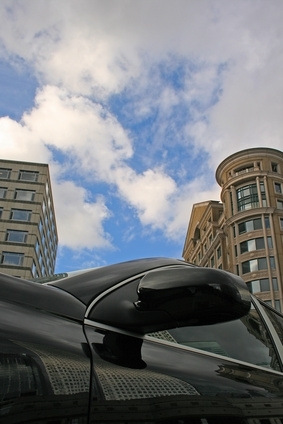
The Chevy Trailblazer midsize SUV is equipped with Chevrolet's tried and tested 3.6 liter V-6 engine or the small block V-8. Both engines offer great access to the engine compartment and the various pumps and generators needed to make the engine and car run smoothly. The water pump is one of the easiest items on the engine block to remove. The only tools needed are a pair of needle nose pliers and some assorted wrenches.
Drain the coolant from the system. This is done easily by placing a large bucket or other container under the radiator drain plug. The drain plug is on the right (passenger) side of the radiator. Remove the plug and allow the coolant to drain until empty. Replace the plug when the coolant is completely drained. No need to set it aside and possibly lose it.
The serpentine belt is on the front of the engine and winds around various pulleys driving the pumps and alternator. The serpentine belt goes around a spring-loaded tensioning pulley. The hex head nut is in the center of the pulley. Attach a socket wrench and turn the tension pulley. The serpentine belt will slide off the pulley.
The water pump is a small black unit with rubber hoses attached coming from the radiator. Use the needlenose pliers to grip the clamps holding the hoses to the pump, and remove the hoses. Remove the hoses with a screwdriver if they are held with worm-gear clamps. The water pump is now free to remove. Use a proper sized wrench to remove the mounting bolts, and pull the water pump off the engine block. Don't worry if any water spills out. This is not a problem, and coolant will be added when the job is finished.
Installation is made simple by doing the removal procedure in reverse: install the pump, tighten the bolts, connect the hoses and put the serpentine belt back on the engine. There is a diagram on the radiator showing the proper route for the serpentine belt around the various pulleys.
VERY IMPORTANT: ADD COOLANT. Don't forget to add sufficient coolant in the radiator fill cap before starting the engine. Start the motor once the coolant is added, and watch the thermostat gauge on the dashboard. A steady operating temperature means the pump is working perfectly.